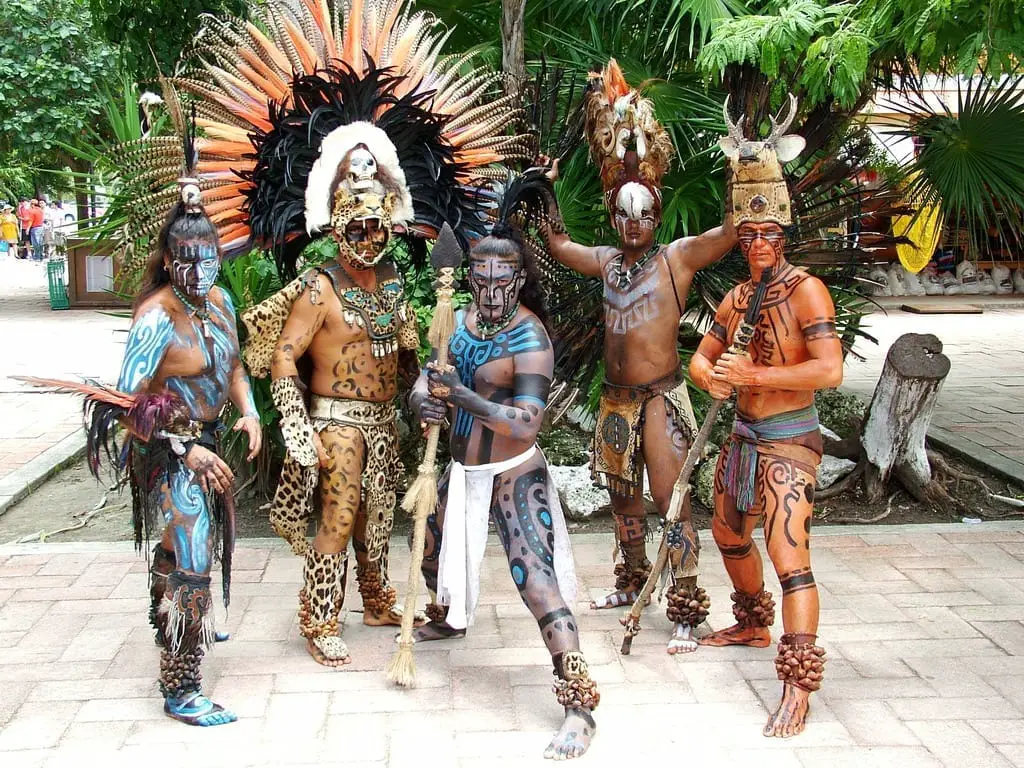Have you ever thought about the people behind the amazing digital worlds we see in movies or games? Someone like Maya Velásquez, for example, really brings those visions to life. Her journey shows how much dedication it takes to create incredible visual experiences, blending technical skill with a true artist's touch. It's almost as if she has a secret recipe for making digital things feel so real, you know?
Her work often touches upon the very foundations of digital art, particularly with tools that have shaped the industry for many years. We are talking about software that helps artists build and animate, giving life to characters and environments that previously only existed in someone's imagination. It's pretty fascinating, actually, how a person can become so adept at using these complex programs.
This exploration of Maya Velásquez’s path also gives us a chance to look at how certain digital creative tools have evolved over time. We can see how long-standing programs, like Maya, have been used by major studios for decades, building up a deep history of development and project-specific adaptations. Her story, in a way, mirrors the growth of the industry itself, showing how individuals adapt and contribute to its ongoing progress.
Table of Contents
- The Story of Maya Velásquez
- What Makes Maya Velásquez's Approach Different?
- How Does Maya Velásquez Tackle Complex Projects?
- What's Next for Maya Velásquez?
- Is Maya Velásquez Connected to Ancient Worlds?
The Story of Maya Velásquez
Maya Velásquez began her creative journey many years ago, drawn to the magic of bringing pictures to life on a screen. She was, in some respects, always curious about how films and games made things look so real. This curiosity led her to explore digital art tools, especially those used by big production houses. It’s a path that many aspiring artists consider, yet her particular dedication truly sets her apart.
She often talks about how certain software, like Maya, has been around for a very long time. She points out that big studios, the ones making those blockbuster films, have been using it for decades, like Industrial Light & Magic or Weta. They've built up so much experience, you know, developing their own ways of working with it over twenty years or more, adapting it for each big project. It's almost like the software has grown up with the industry itself, which is pretty unique.
For those who just have a strong interest in Maya, Maya Velásquez would say it’s perfectly fine to learn it on your own, just for fun. But, if someone wants to truly get into the creative industry, learning Maya by yourself can be quite a challenge. It really does ask for more effort and time. She’d explain that Maya typically breaks down into different areas: building models, working with materials and lighting, and making things move. Each part, she finds, needs its own kind of focus and practice.
Early Sparks and Digital Beginnings
Maya Velásquez’s first steps into the digital art world were, in a way, a bit of an adventure. She remembers a time when she had zero background in animation, just a strong desire to make things move. She’d find herself with a model file, perhaps an FBX, and some image files like PNGs, wondering how to get those textures onto her creations. The model might open up without its colors or surface details, even if it had a skeleton for movement and proper UVs for painting. She’d explain that getting those textures to show up is a common first step for many, and there are straightforward ways to make it happen, like connecting an AO map directly to a color layer’s weight. If you don't have an AO map ready, she’d suggest using the software’s own AO node, which you can find in the material editor. There are many ways to get an AO map, she prefers using methods that fit her flow.
She learned early on that Maya, as a tool, has so many capabilities and different sections. She found that tutorials usually focus on a specific need. For someone just starting out, she often recommends a thorough learning guide, like the Maya 2013 Comprehensive Learning Handbook from Digital-Tutors, which she herself used when she was first getting started. It's available online with subtitles in different languages, which is very helpful for new learners. This kind of foundational material, she believes, really helps build a solid base.
Here is a brief look at Maya Velásquez's professional details:
| Detail | Information |
|---|---|
| Name | Maya Velásquez |
| Occupation | Digital Artist, 3D Modeler, Animator |
| Specialty | Character animation, environmental design, visual effects |
| Years Active | Over 15 years |
| Known For | Bringing imaginative concepts to life with Maya software |
| Education | Bachelor of Fine Arts in Digital Media, specialized courses in 3D animation |
| Influences | Ancient civilizations, nature, modern technology, classic animation |
What Makes Maya Velásquez's Approach Different?
Maya Velásquez has a distinct way of working that truly sets her apart in the digital art space. Her method involves not just knowing the software inside and out, but also a deep appreciation for the art itself. She sees her tools as extensions of her creative thought, rather than just technical instruments. This mindset, you know, allows her to push boundaries and find fresh ways to tell stories with pixels and polygons.
She often speaks about the ongoing conversation in the creative community regarding different software programs. Back in 2002, she recalls, forums like those at Fireball Era were always buzzing with discussions about which software was better, Maya or 3DS MAX. People would argue about it constantly. She finds it interesting that this question still comes up, even today. For her, it’s not about one being absolutely better than the other, but rather about which tool fits the specific creative task and the artist’s personal style. This kind of open-mindedness, she believes, helps her stay adaptable and always learning.
Mastering the Tools- Maya Velásquez's Software Choices
When it comes to picking her digital instruments, Maya Velásquez has seen the landscape change quite a bit over the years. She observes that while Maya has held a very strong position for a long time, its lead has recently become less pronounced. She’s seen Cinema 4D, for instance, really gain popularity, even moving past 3DS MAX in some areas. Blender, too, has been steadily growing in use, also surpassing 3DS MAX. And 3DS MAX itself, she notes, has continued to see its usage decline, falling below both Blender and Cinema 4D. This shift, she finds, shows how dynamic the software market is, and how artists are always looking for the best tools for their work.
Maya Velásquez, for one, finds the software, Autodesk Maya, to be a powerful tool for bringing characters to life. She uses features like setting keyframes, working with nonlinear sequences, and even incorporating motion capture data to make figures move in ways that feel real. She also uses it for creating believable simulations, like the way an explosion looks or how ocean water moves, with tools like Bifrost. It’s pretty incredible, really, what you can achieve. She sees the strength of Maya in its vast set of functions and its many different sections, which allow for a wide range of creative expression.
How Does Maya Velásquez Tackle Complex Projects?
Tackling large, involved creative projects can be quite a challenge, but Maya Velásquez has developed a knack for it. She approaches each new assignment with a methodical yet flexible mindset, always ready to adapt her plans as needed. Her process often begins with breaking down the larger goal into smaller, more manageable steps. This helps her, you know, keep a clear head even when things get complicated. She understands that every project has its own quirks and demands a tailored solution.
She’s also had her share of those moments where things just seem to disappear. She remembers a time when she hid a model using a keyboard shortcut, and then couldn't find it again. It didn't even show up as greyed out in the outline view, so she kept working without noticing. After saving her work, she tried to unhide it, but it just wouldn't come back. These kinds of small technical hiccups, she says, are part of the creative process, and learning how to solve them becomes a valuable skill. She finds that having a good grasp of the software's organizational tools helps a lot in these situations.
Overcoming Challenges with Maya Velásquez
One common challenge Maya Velásquez has encountered, and helped others with, involves models that don't display their textures correctly after being worked on. She recalls instances where a model, after being re-structured and having its UVs prepared, might show up in another program, like Substance Painter, with only a single, default circular UV. This can be quite puzzling for someone just starting out, or even for experienced artists. She knows that solving these kinds of issues often involves checking the UV setup carefully within Maya before exporting, making sure everything is properly laid out. It’s a very common problem, actually, that many digital artists face.
Another hurdle she’s seen people struggle with is uninstalling software cleanly. She’ll often tell people that to completely remove Maya, you need to go to your computer’s control panel and select "uninstall a program." If it’s not removed completely, you might run into problems trying to install it again later. She advises finding the specific version you want to remove. She also mentions that sometimes you need to find the self-extracting files from the original installation, which contain important removal tools. This kind of technical housekeeping, she believes, is a small but important part of keeping your digital workspace tidy.
What's Next for Maya Velásquez?
Looking ahead, Maya Velásquez is always thinking about what the next big thing will be in digital art and how she can continue to grow her skills. She’s not one to stand still; instead, she’s constantly exploring new techniques and ways to push her creative boundaries. Her future projects, she hopes, will continue to merge her technical expertise with her passion for storytelling. It’s pretty clear, you know, that she aims to keep creating work that captivates and inspires.
She believes that the future of creative work will involve even more collaboration and a blending of different art forms. She sees artists from various backgrounds coming together to create truly unique experiences, whether that's in virtual reality, interactive installations, or new forms of animated


/low-angle-view-of-mayan-pyramid-against-sky-888274584-5c45502946e0fb00015f58db.jpg)
Detail Author:
- Name : Miss Raegan Okuneva
- Username : czboncak
- Email : fgaylord@okeefe.info
- Birthdate : 1984-05-28
- Address : 8011 Predovic Flat Suite 443 New Loisport, LA 94681
- Phone : 301-251-4632
- Company : Williamson-Schmitt
- Job : Social Worker
- Bio : Commodi illum reprehenderit nulla quia maiores ad illo. Sunt est at nemo omnis id aut sint. Et cumque sapiente deserunt harum officia. Amet iusto maiores et dolore soluta.
Socials
instagram:
- url : https://instagram.com/onie.vonrueden
- username : onie.vonrueden
- bio : Ipsa quis quos et quo dolor et. Accusantium sint nihil odio aut.
- followers : 6902
- following : 379
tiktok:
- url : https://tiktok.com/@vonrueden2015
- username : vonrueden2015
- bio : Officia officiis ullam nulla id.
- followers : 2883
- following : 1996
facebook:
- url : https://facebook.com/onie9637
- username : onie9637
- bio : Atque et facilis veniam est reprehenderit unde rem.
- followers : 3550
- following : 2330
linkedin:
- url : https://linkedin.com/in/ovonrueden
- username : ovonrueden
- bio : Dolor maiores sint veniam qui consequatur.
- followers : 5765
- following : 2087
twitter:
- url : https://twitter.com/onie_vonrueden
- username : onie_vonrueden
- bio : Consequuntur illum sunt occaecati ipsa et est est. Eos ut magni iusto eos ratione voluptatem.
- followers : 6924
- following : 1137

